More than 50% of Americans nap during the week.
Sleep Foundation110+ Sleep Statistics and Trends You Need for 2023
The more you know about sleep, the better you can understand your own habits.
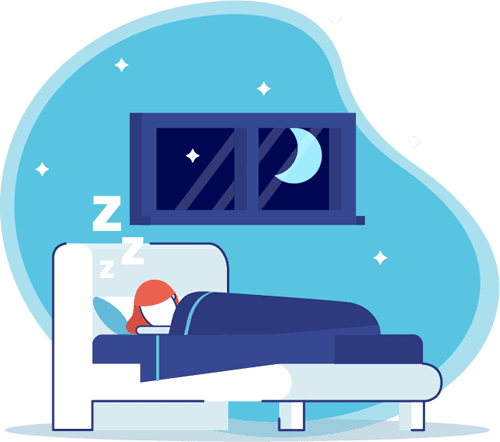

A few minutes of social media just before we go to bed is something most people do.
Five minutes won’t make much of a difference, right?
Well according to science, they do. Screen time at any point of the day affects your sleep, but it’s more disruptive if it’s closer to bedtime. Everyday life choices, no matter how insignificant they may seem, can have a big impact on your sleep quality.
Sleep is vital for our health, much like proper food and exercise, but most of us take it for granted. We fail to realize how our sleep health affects our mental and physical well-being.
Did you know that insufficient sleep can even jeopardize your life? Your lack of sleep can become a risk for others too — sleeplessness contributes to a high number of accidents each year in not just the United States but all over the world.
Just look at these shocking facts and I bet you’d think twice before skimping on the recommended amount of sleep next time.
01 Sleep Patterns
By Age

Most infants sleep 8-10 hours during the day and 8 hours at night.
Stanford Children's HealthTwo-thirds of children start sleeping through the night on a regular basis by the age of 6 months.
Stanford Children's HealthToddlers sleep for 11.7 hours on average instead of the recommended 12-14 hours for children aged 1-3 years.
Sleep For KidsTeens tend to keep irregular sleep patterns, especially on weekends — sleeping late and waking up late, which can disturb their circadian rhythm.
Sleep FoundationOnly 15% of teens get the recommended 8.5 hours of sleep on school days.
Sleep FoundationTeens require 8-10 hours of sleep per night.
Sleep Foundation88.5% of high-school students report sleeping less than 9 hours and 78% of them report feeling tired during the day.
FrontiersAdults need 7 hours of sleep per night for optimal health.
Center for Disease Control and Prevention
59% of Americans sleep for 7 hours or more at night while 40% sleep for less than 7 hours.
Start Sleeping38% of adults aged 25-34 years and 32% of adults between 18-24 years sleep less than 7 hours.
The Good BodySince 1985, the percentage of adult Americans sleeping less than 6 hours has increased by 31%.
The Good Body
36.5% of American workers sleep less than the recommended 7 hours.
Center for Disease Control and PreventionIn 1910, the average person slept for 9 hours each night.
The Good BodyAn average adult takes 7 minutes to fall asleep.
PsychCentral
In 2013, Americans slept 6.8 hours on average which is more than an hour less than they slept in 1942.
Start Sleeping02 Sleep and Women

Women sleep 20 minutes more than men on average.
Higher PerspectiveWomen are more at risk to have sleep disorders due to the prevalence of anxiety and depression.
Research GateThe NREM phase among women is short, which means lower sleep quality.
National Institutes of HealthAs of 2018, women worked more and slept less than men.
U.S. Department of LaborWomen spend 25% more time on childcare and household activities than personal care.
Medical News Today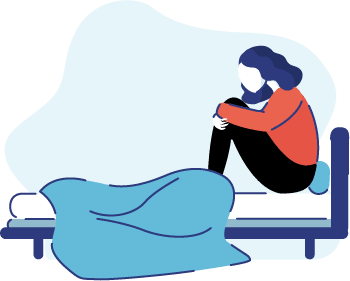
Women find it more difficult than men to fall and stay asleep during the night.
Sleep Foundation13% of adult men and 36% of adult women aged 65 or more take about 30 minutes to fall asleep.
Sleep Education (AASM)03 Sleep and
Lifestyle Factors
Bed-sharing with infants doubled from 6.5% to 13.5% between 1993 and 2015.
Medical News Today70.8% of couples report having better sleep quality with their partner while 62.5% report a shorter sleep onset time.
National Institutes of Health
A cooler bedroom temperature of 60-67 degrees Fahrenheit is best for optimal sleep.
Sleep.org85% of the US population consumes one caffeinated drink per day.
Science DirectSmokers tend to have more stage 1 light sleep and less slow-wave deep sleep.
American Journal of Epidemiology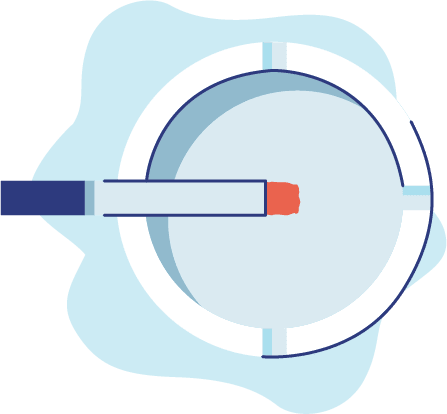
One cigarette can cause you to lose 1.2 minutes of sleep each night due to nicotine stimulation and withdrawal effects.
HuffPost
Only 1 in 10 Americans prioritize sleep over fitness, work, hobbies, and social life.
Sleep Foundation33% of people who sleep less than 7 hours are overweight while 23% are smokers, 27% are physically inactive and 19% are excessive alcohol drinkers.
Center for Disease Control and PreventionAdults who sleep less than 8 hours a night are more likely to report stress symptoms such as fatigue, irritability, and anger.
American Psychological AssociationAdults with lower stress levels tend to sleep for more hours during the night compared to those with higher stress levels.
American Psychological AssociationAmericans who reported very good or excellent health slept 23 minutes more each night, compared to those with poor, good or fair health.
Sleep Foundation32% of toddlers and 12% of infants watch TV as a part of their bedtime routine, which negatively affects their early childhood sleep duration and quality.
National Institutes of HealthExposure to blue light can reduce sleep by 16 minutes, with an average of 7.6 sleep disruptions during the night.
Science DailySix minutes of reading at night can reduce stress by 68% and help combat insomnia.
Business InsiderLess fiber and more saturated fat and sugary foods are linked to poor sleep.
NBC News, BetterEvery hour of screen time reduces sleep time by 3-8 minutes.
Science Daily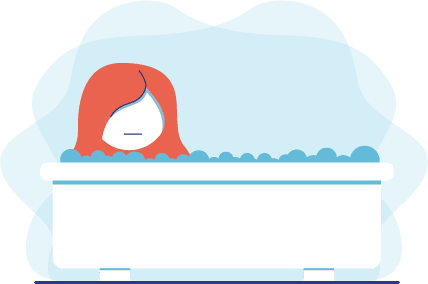
A warm bath two hours before bedtime can improve the sleep onset time by about 36%.
Quartz, Soak and SleepPeople sleeping for 6 hours or less regularly are 16-59% more dehydrated compared to those who sleep 8 hours each night.
Medical News TodayDaytime naps of 20-30 minutes can improve mood, alertness and work performance.
Sleep Foundation04 Sleep Disorders
Around 68% of Americans struggle to fall asleep at least once a week.
Consumer Reports50-70 million people in the US suffer from sleep disorders of which obstructive sleep apnea is the most common.
The Sleep Zone, Cheap CPAP Supplies Blog48% of people in the US snore.
American Sleep AssociationAround 22 million Americans suffer from sleep apnea while 80% of moderate to severe obstructive sleep apnea cases remain undiagnosed.
Sleep Apnea.org, ASAAApproximately 3-7% of men suffer from sleep apnea while only 2-5% of women are affected by it.
Sleep Apnea.org, ASAAAround 1 in every 2000 people suffer from narcolepsy in the US. That makes about 20,000 Americans.
Narcolepsy NetworkOnly 25% of the people with narcolepsy get diagnosed and receive treatment.
Narcolepsy Network
50-80% of patients with psychiatric conditions suffer from chronic sleep problems compared to 10-18% of the general population.
Harvard Health PublishingInsomnia is a common sleep problem among adults with 30% of people suffering from disturbed sleep while another 10% showing signs of severe insomnia.
Sleep Foundation3% of the population experiences insomnia symptoms triggered by medical or psychiatric conditions.
American Academy of Sleep MedicineAlmost 25% of people experience acute insomnia every year, but only 75% of them recover without developing chronic insomnia or persistent sleep issues.
Science Daily7-16% of adolescents and young adults show Delayed Sleep Phase Disorder (DPS) marked by staying up late at night and waking up late in the morning.
American Academy of Sleep Medicine
Delayed Sleep Phase Disorder is reported in 10% of patients with chronic insomnia.
American Academy of Sleep Medicine40% of individuals with DPS have a family history of insomnia.
American Academy of Sleep MedicineEach year, 1,550 fatal and 40,000 non-fatal injuries are reported in the US due to drowsy drivers.
American Sleep AssociationAccording to an estimate, one in 25 drivers (> 18 years) reported having fallen asleep while driving.
Sleep Foundation05 Sleep Medications

9 million Americans take prescription drugs to help them sleep.
NBC News41% of people use over-the-counter sleep aids several times a week.
Consumer ReportsWomen are more likely to use sleeping pills with 5% women to 3% men.
Center for Disease Control and PreventionOne in six adults diagnosed with a sleep disorder and one in eight adults with sleep problems report using sleep aids.
Center for Disease Control and PreventionVitamin B regulates the sleep-inducing hormone melatonin.
Sleep.orgUse of melatonin supplements among US adults has doubled from 2007 (0.6%) to 2012 (1.3%)
American Academy of Sleep Medicine (AASM)An estimated 3.06 million adults use melatonin.
American Academy of Sleep Medicine (AASM)More than 60% of individuals who are on antidepressants have taken them for two years or longer.
Addiction Center
Low alcohol intake decreases the physiological recovery offered by sleep by 9.3%. Moderate alcohol intake decreases it by 24%, while high intake reduces it by 39.2%.
Medical News TodayOver 4.5% of adults use CAM (Complementary and Alternative Medicines) to help them sleep. 39.1% of adults use music therapy while 64.8% use bio-herbal or aromatherapy for mental and physical relaxation.
Hindawi06 Sleep Habits
The average bedtime for American sleepers is 11:21 PM.
Yahoo FinanceNew Zealand has the highest average sleep time of 7 hours 30 minutes, closely followed by the US with an average sleep time of 7 hours and 6 minutes. Japan has the lowest average sleep time of 5 hours 59 minutes.
Science Advances. AAAS07 Sleep Deprivation
Drowsy driving is as dangerous as driving with an 0.08% alcohol intoxication, which is illegal in many states across the country.
Sleep Foundation10,000 deaths in US hospitals takes place due to medical error caused by sleep deprivation.
American Sleep AssociationPeople with less than 7 hours of sleep each night are at higher risk (12%) of premature death.
Warwick News & EventSleep deprivation costs the US $411 billion annually.
Rand CorporationPeople who sleep less than 6 hours could increase the economy by $226.4 billion by sleeping a couple of more hours.
Rand Corporation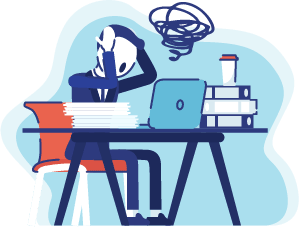
Sleep deprivation can cause an annual loss of 11 days of productivity per person.
The Washington PostA mother’s risk of sleep deprivation increases by 46% with each child per household.
Breaking News English08 Dream Statistics
People suffering from PTSD have an 80% chance of experiencing nightmares.
BustleMore than 50% of the people report having lucid dreams at least once in their life.
Sleep FoundationAbove the age of 10, people dream about 4-6 times per night. So, out of 8 hours, you may spend two dreaming.
Sleep.orgMen dream of other men 70% of the time while women dream about men and women equally.
The Sleep Better Council65% of dreams are angry or sad while 20% are about happiness, on average.
NCBI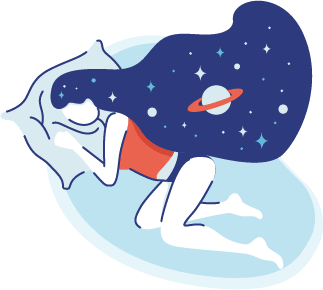
Humans forget 50% of dreams five minutes after waking and 95% by the time they are out of bed.
The Sleep Better CouncilREM sleep, during which people usually dream, improves problem-solving skills. Those who dream in REM are 32% better at doing puzzles than those who dream in non-REM.
National Institutes of Health09 Sleep and Technology
The CPAP machine remains the gold standard for treating sleep apnea.
Sleep Apnea Statistics80% of people fall asleep within 5 minutes in response to white noise.
National Institutes of HealthThe overall CPAP non-adherence rate is based on 7 hours per night sleep time.
National Institutes of Health
24% of Apple apps and 11% of Google Play apps can provide a graph of movement during sleep.
National Institutes of HealthMore than 65% of sleep apps report on sleep structure, including sleep duration, awake time, and amount of light and deep sleep. However, the ability to report REM sleep is limited.
National Institutes of HealthIn 2019, 37.4 million people downloaded the Sleep Cycle app worldwide and tracked 4.38 billion sleep hours.
Sleep Cycle
There are more than 4,700 sleep centers and labs in the US alone.
NBC News66% of CPAP users are adherent to therapy.
American Sleep Association (ASA)95% of patients using Mandibular Advancement Devices snore less.
National Institutes of HealthOver 10% of surveyed adults use sleep trackers on a regular basis.
StatistaMore than 50% of women use sleep trackers.
StatistaSleep technology is expected to reach $79.8 billion in 2020.
Persistence Market Research10 Mattress Statistics
In 2017, the online mattress industry saw a sudden hike with a 60.6% increase in sales.
Digital CommerceThe global mattress industry is expected to be worth $43 billion in 2024.
Zion Market Research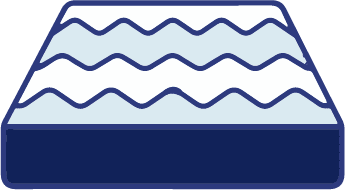
In 2015, memory foam was the most popular mattress type with an 81% customer satisfaction rate.
Market Research.comNew mattresses tend to decrease pain by 48% while improving sleep quality by 55%.
National Institutes of Health49% of Americans prefer sleeping on innerspring units or pillow-top mattresses, making them the most popular ones.
The Better Sleep CouncilDespite all the scientific evidence, we don’t value our sleep as much as we should. But to sum it all up, people of all age groups should sleep for 7-9 hours daily to ensure physical, emotional and mental well-being.
Sleep aids can help us improve our sleep; but lifestyle changes are a much more effective and long lasting solution. Exercise, balanced diet, effective bedtime ritual, and a comfortable mattress, all boost the quality of our sleep. If all else fails, make sure you’re sleeping on the best mattress for you!







